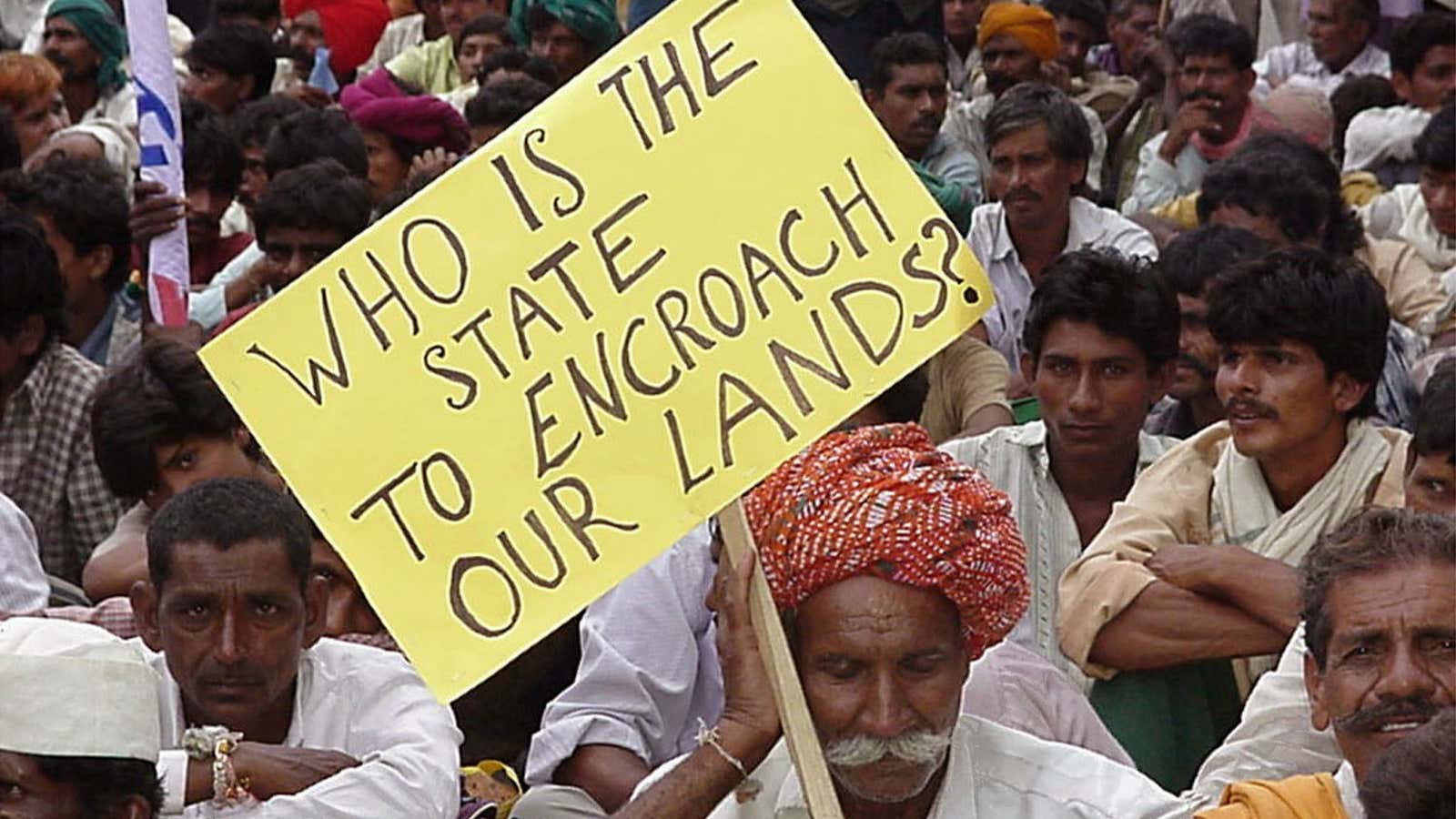In the winter of 1961 the tribespeople of Kothie, a small hamlet in the western state of Gujarat, were chased off their ancestral lands as though they were intruders.
Kothie quickly turned into Kevadiya Colony, a grim concrete homestead for the government engineers and bureaucrats who would, over the next few decades, build the gigantic 138.68-metre-high Sardar Sarovar Dam. It was one of four mega dams—and thousands of smaller dams—that were part of the Narmada Valley Development Project, planned on the Narmada and her 41 tributaries.
The people of Kothie joined the hundreds of thousands of others whose lands and homes would be submerged—farmers, farmworkers, and fisherfolk in the plains, ancient indigenous tribespeople in the hills—to fight against what they saw as wanton destruction. Destruction, not just of themselves and their communities, but of soil, water, forests, fish, and wildlife—a whole ecosystem, an entire riparian civilisation.
The material welfare of human beings was never their only concern. Under the banner of the Narmada Bachao Andolan (Save the Narmada Movement), they did everything that was humanly and legally possible under the Indian constitution to stop the dams.
They were beaten, jailed, abused, and called “antinational” foreign agents who wanted to sabotage India’s “development.” They fought the Sardar Sarovar as it went up, metre by metre, for decades. They went on hunger strike, they went to court, they marched on Delhi, they sat in protest as the rising waters of the reservoir swallowed their fields and entered their homes. Still, they lost.
The government reneged on every promise it had made to them. On Sept. 17, 2017, the prime minister of India, Narendra Modi, inaugurated the Sardar Sarovar Dam. It was his birthday present to himself on the day he turned sixty-seven.
Even as they went down fighting, the people of the Narmada taught the world some profound lessons—about ecology, equity, sustainability, and democracy. They taught me that we must make ourselves visible, even when we lose, whatever it is that we lose—land, livelihood, or a worldview. And that we must make it impossible for those in power to pretend that they do not know the costs and consequences of what they do.
They also taught me the limitations of constitutional methods of resistance.
[…]
Late realisation
Today, even the harshest critics of the Narmada Bachao Andolan have had to admit that the movement was right about almost everything it said.
But it’s too late. For decades, the Sardar Sarovar sponged up almost all of Gujarat’s irrigation budget. It hasn’t delivered anything like what the planners and politicians promised it would. Nor have its benefits, such as they are, gone to the farmers in whose name it was built.
Now it straddles the river it murdered, like a beast brooding over a kill that it cannot eat. A monument to human folly. One would have thought that this would be lesson enough.
After the dam, a statue
Almost exactly a year after he inaugurated the dam, on Oct. 31, 2018, the prime minister travelled to Kevadiya Colony again, this time to inaugurate the world’s tallest statue. The Statue of Unity is a 182-metre-tall bronze likeness of Sardar Vallabhbhai Patel, a popularly revered freedom fighter and India’s first deputy prime minister, after whom the Sardar Sarovar Dam was named.
Sardar Patel was, by all accounts, a man who lived simply. But there’s nothing simple about the $430-million-dollar (around Rs3,000 crore) statue that has been built in his memory. It towers out of a 12-square-kilometre artificial lake and is made of 200,000 cubic tonnes of cement concrete and 25,000 tonnes of reinforced steel, all of it plated with 1,700 tonnes of bronze.
Indian expertise proved unequal to a task on such a scale, so the statue was forged in a Chinese foundry and erected by Chinese workers under Chinese supervision. So much for nationalism. The Statue of Unity is nearly four times as tall as the Statue of Liberty, and more than six times higher than the Christ the Redeemer statue in Rio de Janeiro.
On a clear day, it is visible from a distance of seven kilometres. The whole of the village of Kothie, had it still existed, could have been accommodated in its big toe. Kothie’s former residents and their comrades-in-arms are probably meant to feel like dirt in the statue’s toenails. As are the writers who write about them.
Excerpted from Arundhati Roy’s My Seditious Heart, published by Penguin. We welcome your comments at [email protected]
